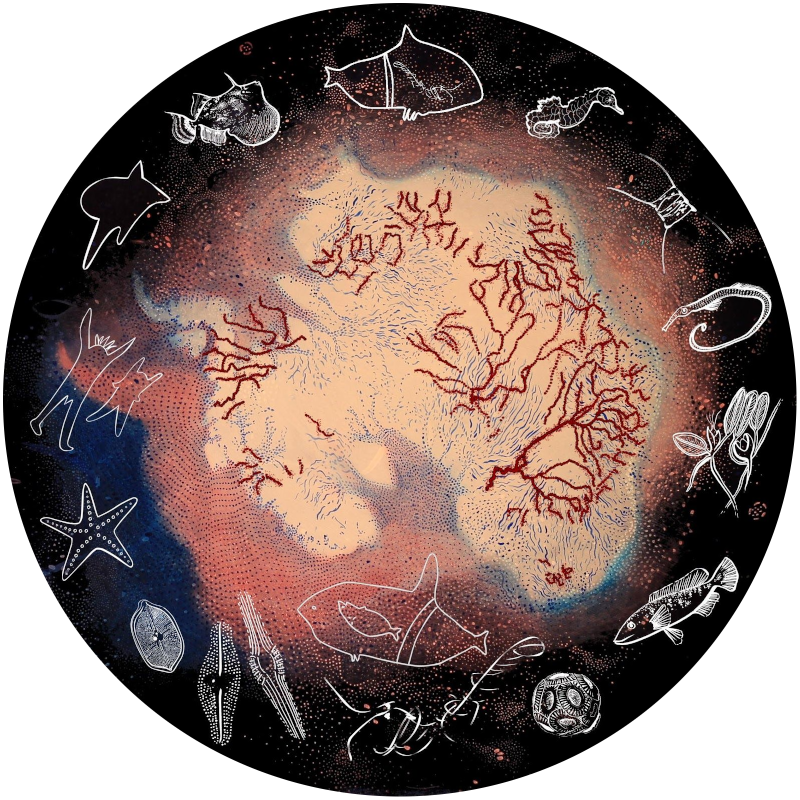Living Data
Oceanic Living Data
Disclaimers, Copyrights and Citations
Presentations/Index 2010 2011 2012 2013 2014 2015 2016 2017 2018 2019 2020 2021 2022 2023 2024
Dance and scientific data combine to tell a story.
May 7, 2012. Oceanic Living Data, Rozelle School of Visual Arts, Sydney
Living Data's combination of scientific data and subjective responses reflects Indigenous, biological and mechanistic views of the natural world, forming through relationships between parts and our selves as part of that forming process. Oceanic Living Data is an animated installation. It evolves like a scientific model, to reflect new scientific understandings. Iterations of Oceanic Living Data are performed in different places and times. These performances reflect diverse responses people make to the scientific data.
Dancer Caterina Mocciola,scientist/dancer Ashley Macqueen,and musician Fabio Muccini,improvise with tracings of graphs, satellite and microscopic images, and gestures of other scientists and artists describing and expressing.
Traced data and gestures express physical changes and personal transformations.
Scientific data come from the Australian Antarctic Divisionand the University of Technology Sydney.
A floating screen of plankton mesh...
Illuminates Living Data.
Circling, Spiralling, Crossing lines...
describe natural systems...
physical, biological, emotional.
Glacial ice melts.
Krill stir the sea.
Diatoms drift.
Connectivity is felt and measured.
Antarctic sea ice pulses...
like breath.
Water energy flows.
Water molecules freeze and thaw.
The circumpolar current spins.
Cold bottom water spirals from Antarctica.
Nutrients are drawn up...
by krill and ocean currents.
Krill release eggs.
Sea levels rise.
Oceans warm.
More CO2 seeps into the water...
than many creatures can bear.
CO2 acidifies water.
Natural balance between plants and animals...
is tipping.
Is the problem human?
Anthroposcene?
Can the solution be human?
Can life as we know it adapt...
to increasing variability in temperature?
Human hands create...
to suit human desires.
Plants of the land and sea create...
the oxygen we breathe...
Words: Lisa Roberts with Sue Anderson and Steve Nicol



















